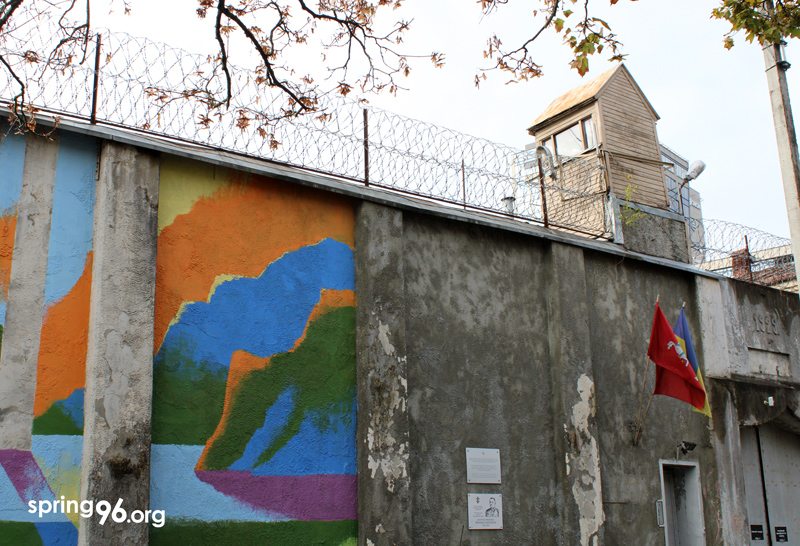Restriction, moratorium, abolition: How Lithuania eliminated the death penalty
Viasna reports how independent Lithuania abolished the death penalty. Its neighbor, independent Belarus, has not abolished capital punishment to this day.
Since the restoration of its independence on March 11, 1990, the Republic of Lithuania has taken consistent measures to limit, halt, and finally ban the death penalty in the country. In Belarus, since that time, more than 330 people have been sentenced to this punishment, and only three people were pardoned by Aliaksandr Lukashenka — they were sentenced either to life imprisonment or long terms.
Eight years from the declaration of independence to the abolition of the death penalty
In Soviet times, the criminal legislation of the Lithuanian Soviet Socialist Republic allowed the use of the death penalty under 16 criminal articles. The first step towards limiting capital punishment was the adoption in 1994 of the Law on Amendments to the Criminal Code. Under Article 24 of the Law, the death penalty could be imposed only for "completed premeditated murder under aggravating circumstances."
Already in independent Lithuania, before the introduction of the moratorium on the death penalty on October 1, 1996, 16 death sentences were handed down. Moreover, seven of them were executed, one convict committed suicide, one was acquitted, and the rest petitioned for clemency, which were satisfied.
In the second half of 1996, Lithuania declared a moratorium on the death penalty. This punishment remained in the Criminal Code but was no longer applied. In 1998, the Constitutional Court of the Republic of Lithuania recognized that the sanction stipulated in Article 105 of the Criminal Code (premeditated murder with aggravating circumstances) contradicts the Constitution of the State. In the same year, the Seimas passed a law that removed the death penalty from the list of punishments stipulated in the Criminal Code. The Law entered into force on December 31, 1998. On January 18, 1999, the Republic of Lithuania signed the Sixth Protocol on the Abolition of the Death Penalty of the Convention for the Protection of Human Rights and Fundamental Freedoms. It was ratified on June 22 of the same year.
The last person shot in the republic in 1995 was Boris Dekanidze, the leader of the largest organized criminal group Vilnius Brigade, who was accused of organizing the contract killing of Vitas Lingys, a journalist of the newspaper Respublika.
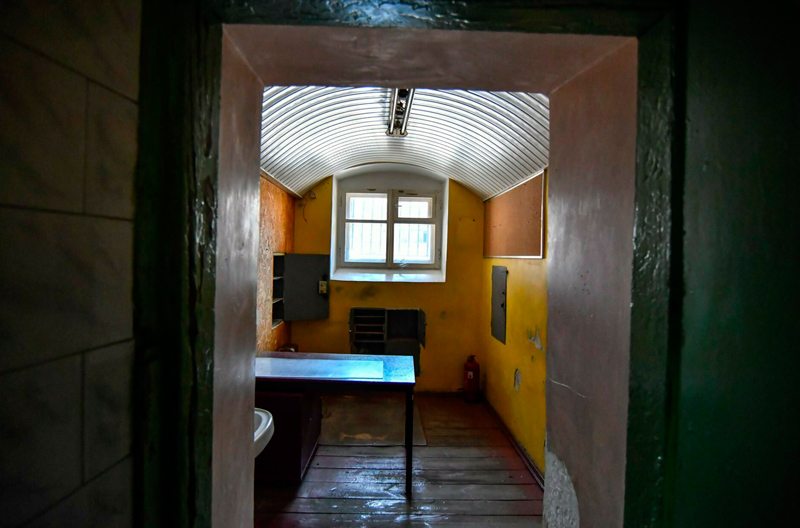
- Cell in the Lukiškės prison. A photo from social media
Journalist Vitas Lingys was one of the first to cover the details of crimes committed by members of the brigade and write about organized crime in Lithuania. He repeatedly received death threats for it. On October 12, 1993, he was shot three times in the head.
On November 10, 1994, the court found Dekanidze guilty of murdering a journalist, and on July 12, 1995, contrary to the practice of carrying out death sentences, he was shot in the Lukiškės prison.
Behind the veil of secrecy: How death sentences were executed in Lithuania
Death sentences in both Belarus and Lithuania were carried out by firing squad. The execution procedure also took place under a veil of secrecy. In Belarus, for example, according to the former head of pre-trial detention center No. 1 Aleh Alkayeu, who at the same time managed a special team, those sentenced to death were taken to secret places to pre-dug graves, where they were shot in the back of the head, and the burials were concealed. Alkayeu simplified the procedure and those sentenced to death were shot directly at the Valadarka prison.
And what was it like in Lithuania? At one time, the journalists of the newspaper Lietuvos Rytas found out that the sentences were carried out on a busy highway Vilnius-Panevėžys in the Širvintos district. This was done in a special minibus Latvia, which usually stood on the side of the road.
The car was additionally equipped to perform this unusual function. Bars were installed inside, and the glass was darkened. The "firing squad" arrived at the Lukiškės prison in the evening. They distributed the roles among themselves. The details of the operation were discussed verbally, with no paperwork. The convict was ordered to go to the bathhouse or the doctor. But then he was brought before the prosecutor, who informed him that the petition for clemency had been rejected and the sentence would be carried out. They put a bag on his head and took him to the minibus.
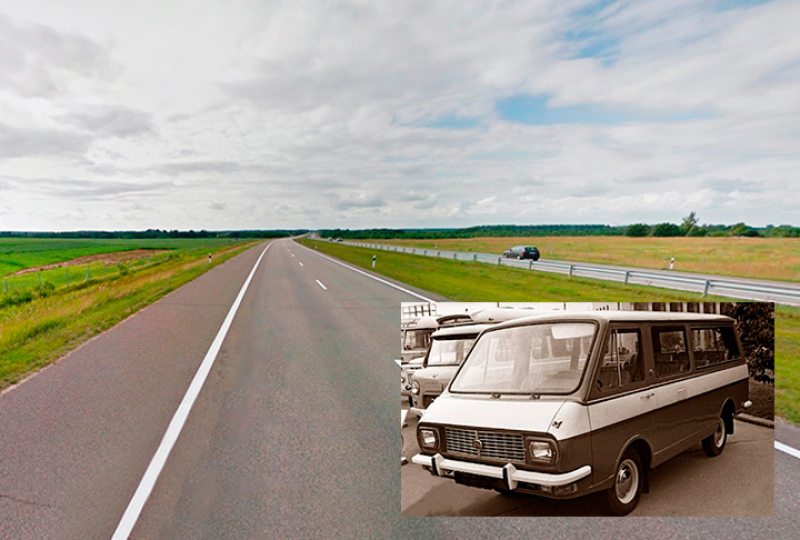
- 30th kilometer of the Vilnius-Panevėžys highway and minibus Latvia. Photo collage
About 30 kilometers outside Vilnius, they stopped at the curb. The convict was laid on the floor and shot. This highway is very busy. Therefore, the minibus at the side of the road did not attract much attention. Six people were executed in this way in Lithuania. The sound of the shot, and sometimes it was necessary to shoot twice, was drowned out by the noise of the engine. After the execution of the sentence, the body was taken to the morgue in the same car, and the minibus was thoroughly washed.
Boris Dekanidze, the last person and the seventh one, was shot in the Lukiškės prison. The authorities were afraid that there might be an attack, and that the details of the "operation" might become known to criminals who remained free. It was not possible to determine the exact place where the sentence was carried out.
A few facts about the Lukiškės prison and the KGB prison
The Lukiškės prison was built in 1904 and operated until July 2, 2019. The prison was designed like the famous Kresty prison in St. Petersburg and was equipped with good ventilation, sewerage, and heating.
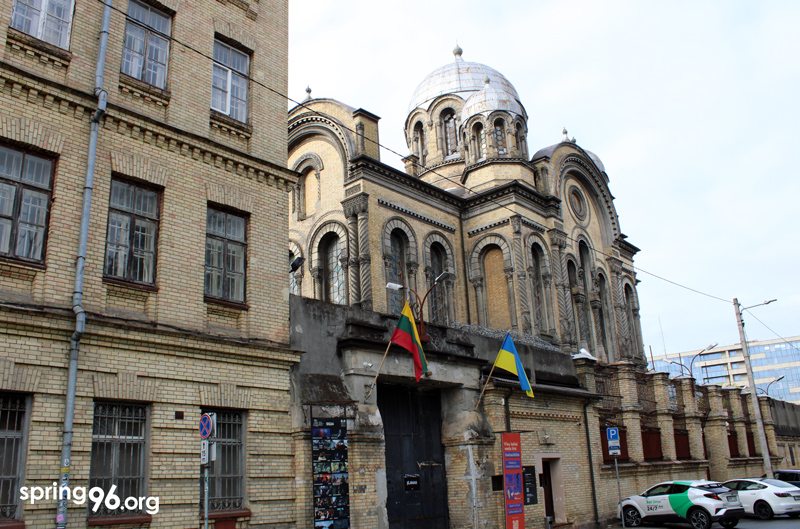
- Lukiškės prison today
When on June 15, 1940, the Soviet Union occupied Lithuania, mass repressions began in the country: Lithuanian residents who were deemed undesirable to the occupiers were arrested, deported to Siberia and other remote areas of the Soviet Union, and shot.
In the autumn of 1940, the Vilnius NKVD Directorate was established in the former Palace of Justice, and a prison, now known as the KGB prison, was organized in its basement. In the period from 1944 to the early 1960s, more than 1,000 prisoners were executed there.
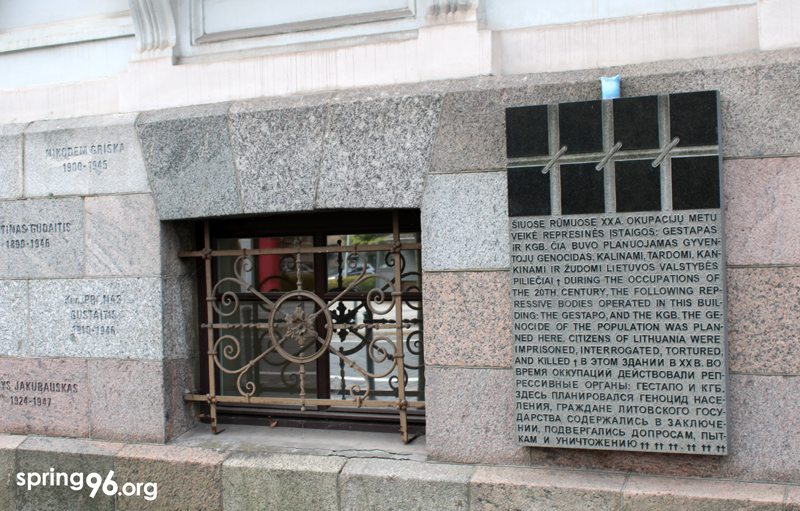
- Plaque at the Museum of Occupation and Freedom Fights
Now it is a Museum of Occupation and Freedom Fights.
Punishments in the post-war period were also carried out in the Lukiškės prison, but this information was classified for several more decades.
There is a version that while Lithuania was part of the USSR, it had no "specialists" of its own. Therefore, some of the criminals were taken to Minsk, where the sentence was carried out. And only with the restoration of independence did they need their own executioners.
At various times, among the prisoners of the Lukiškės prison were the first Prime Minister of Israel, Menachem Begin, who later became a Nobel Peace Laureate, dozens of famous Belarusians, including Maksim Haretski, Frantsishak Aliakhnovich, Barys Kit, Ryhor Shyrma, and others.
One of the first and most famous convicts here was Felix Dzerzhinsky, the founder and head of the Cheka.
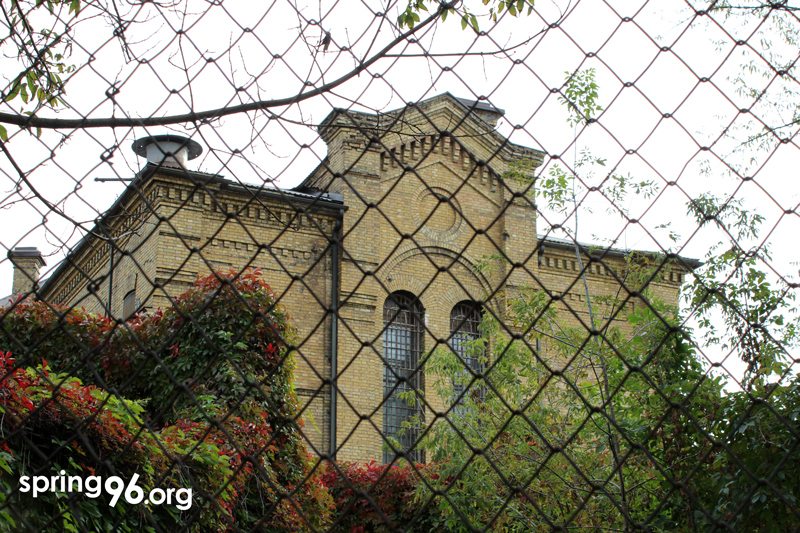 The situation in Belarus is getting worse each year
The situation in Belarus is getting worse each year
It has been 28 years since Lithuania finally abolished the death penalty. At the same time, unlike Belarus, no referendums were held here.
In January 2021, the Ministry of Internal Affairs of Belarus announced amendments to the Criminal Code, including the introduction of a moratorium on the death penalty. However, in May, Aliaksandr Lukashenka signed the law On Changing the Codes of Criminal Responsibility, and the issue of abolishing the death penalty was postponed again.
In 2022, amendments to the Criminal Code came into force, according to which the death penalty can be used not only to punish for the crime itself but for attempted crimes also. There are 14 crimes punishable by the death penalty in Belarus.
On March 25, 2023, amendments to the criminal liability codes came into force, stipulating the death penalty for officials and military personnel for treason, as well as criminal liability for propaganda of terrorism and discrediting the army.
